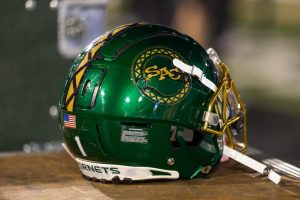Emergency system introduces speakers
April 27, 2011
Sacramento State is planning to increase accessibility to the warnings issued by the Emergency Notification System through the recently installed speaker system on campus.
The Department of Public Safety organized and laid out blueprints for the 27 speakers now located around campus. After the logistics were set, the infrastructure for the speaker system was installed by Facilities Services.
The ENS was a product of Sac State’s overhaul of its process of issuing emergency warnings in 2007, following the shootings at Virginia Tech. The system was created with the intention of alerting students in the case of an urgent situation.
Larry Gilbert, vice president of Information Resources and Technology, said having the speakers be an auditory supplement to the ENS should increase the speed in which the emergency warnings can be delivered.
“This ensures that visually impaired students and staff will receive emergency messages in a timely manner,” Gilbert said. “The system also ensures that more people on campus will receive messages quickly, without having to be within reading distance of an electronic sign.”
This expansion on the ENS has been in the process of implementation for more than a year, with the initial planning phase dating back to January 2010.
The telecommunications department assisted with the engineering of the project as it came to fruition. Visiplex, a business that works with mass communication systems, instructed ENS operators on how to use the speakers.
Prior to the inclusion of speakers and digital signage around campus, the emergency messaging process relied on a system of notifying students through email and text messages. Only 10,300 students, around one-third of the Sac State’s total enrollment, have so far signed up for the text and email updates from the ENS.
“It just doesn’t seem like there is enough students that know about the texting or emailing system,” said Mike Swastek, senior digital film production major. “Honestly, the only reason I signed up for it is because of my criminal justice professor, who made all the students in my class sign up for it.”
Other students have questioned the system itself, claiming that accessibility could prohibit an emergency message from reaching students in dire situations.
“I think that the system of receiving text and email warnings in an emergency is flawed,” said David Donnelly, senior computer science major. “Who is to say that I’ll have access to a cell phone or email when an emergency happens anyways?”
Tony Lucas, director of administrative services at the Department of Public Safety, said the idea of installing speakers was pursued to allow students access to the ENS at all times.
“The speaker system is just another way to get the word out in an emergency situation,” Lucas said. “I really don’t want to jinx it, but if we were to ever have an event like a shooting at Sac State … Well, students would have to be immediately aware of the situation as it is happening.”
Messages will be broadcast over the speakers in the case of a life and death emergency, with some possible situations being terrorist attacks, hazardous chemical spills and bomb threats.
Unlike the email and text message alerts, the speaker system will not be used to inform students of events that have already transpired.
Lucas said the ENS will still primarily transmit its messages through emails and texts, and the speaker system will see use only in rare cases. Unless the emergency is an imminent and urgent danger, the speakers will not be used.
“We are never going to do routine tests over the speaker system or issue minor warnings,” Lucas said. “What we don’t want is for students to become desensitized to hearing the speakers. Basically, if you do hear something being broadcast, it’s going to be something important – so listen up.”
All but three of the speakers were completely functional by the beginning of April. The three that were not working properly were adjusted, and now the system is operational and ready to be used if needed.
“I still have a lot of unanswered questions about the speaker system,” Swastek said. “Like, if I’m on the third floor of a building, how could I hear it? Also, if there ever were a school shooting on our campus, would it really be best to broadcast it across all of the speakers – possibly infuriating the shooter more?”
Lucas said this is a valid concern, but problems like these were identified and solved during the long planning process.
“We can isolate where the message is being broadcast,” Lucas said. “So if there was a situation in the Quad, we can use the three speakers in the Library let students know – tell them to bar the doors and get under tables.”




























































































































